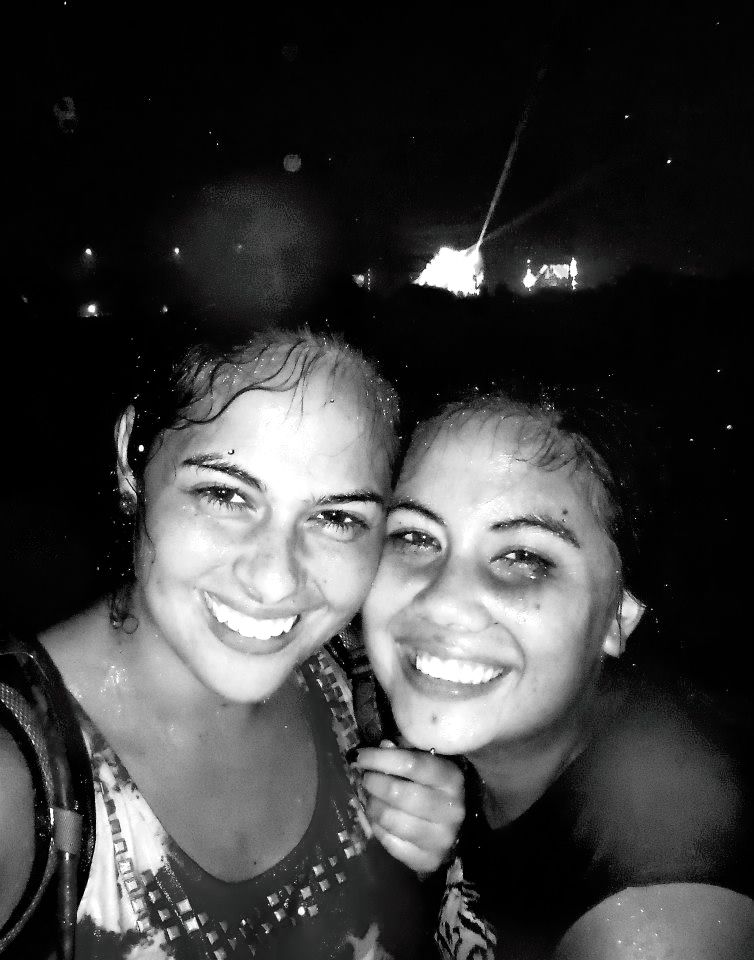V. relatable
Why I Hope My Ex Was A Once-In-A-Lifetime Kind Of Love


V. relatable


“We are both locked-in cases, each in his own way: myself in my carcass, my father in his fourth-floor apartment” (Bauby 45).
The most striking and prevalent characteristic of Jean-Dominique Bauby’s circumstance is his not altogether unpredictable fixation on his feeling of imprisonment. The title of his memoir, the first thing we encounter in the memoir, includes a characterization of his prison: the diving bell. Almost every single page of the account is permeated by a sense of imprisonment. Obviously, his locked-in syndrome literally imprisons himself in a body unable to manage human bodily functions, but the affliction also imprisons Bauby rendering him unable to communicate to the extent he is accustomed, clearly a torment to one whose life-work is based primarily upon communication, even mass communication.
Imprisonment is a theme with which we are becoming increasingly familiar, memoir after memoir read. A sense of imprisonment can occur in a variety of circumstances, and several distinct versions of imprisonment have been presented in each of the four books that we have encountered thus far: Susanna Kaysen, imprisoned by a borderline personality diagnosis; Clifton Crais, imprisoned by a desperate need to rediscover his past, forgotten as a result of childhood amnesia; Paul Guest, imprisoned by his own unique experience with quadriplegia; Bauby, imprisoned by locked-in syndrome.
The quote presented above provides several entries into Bauby’s insight; we meet an important relationship in his life, and in interpreting his language here an important method of dealing with adversity. His father, who experiences his own version of imprisonment, provides for Bauby, some sense of solidarity. It always mitigates some of the pain when you can recognize that someone else knows, at least to some degree, your pain, your suffering.
Bauby’s use of the word “carcass” is distinctive (Bauby 45); the word is typically used to describe a dead body, but, of course, he is not dead. His use of this word expresses resignedness, but it, like countless other expressions in this book, is tinged by humor. Humor and comic relief here seem almost necessary responses to such a tragic circumstance, and it brings up the question: Does humor emerge from dormancy as a necessary response to the awful conditions that the individual has been shoved into? Guest’s, Kaysen’s, and Crais’s memoirs each also contain some sense of humor, and this parallel was fascinating, particularly considering each’s individually dire situation. It seems that each must overcome different barriers, and humor instinctively serves as a mighty vehicle for this purpose.
Bauby, Jean-Dominique. The Diving Bell and the Butterfly. New York: Alfred A. Knopf, Inc., 1997. Print.

“Through history telling, in the words we begin using, the child integrates experience, consolidates memory, and develops a consciousness of self, even if that self in some respects is always a fiction. Like language, the self struggles to prove its truth, marching toward a point forever disappearing in the distance” (Crais 117).
The idea of self has great implications in literature, but it is particularly pronounced in memoir-writing. The two stories we have explored thus far have explored the self in depth. Both Kaysen (Girl, Interrupted) and Crais (History Lessons) struggle with identity and in similar and contrasting ways. Both of their self-ideologies circle around a mental disorder: for Kaysen, a borderline personality disorder diagnosis; for Crais, childhood amnesia.
Much of Kaysen’s self-development was dependent on how external actors perceived her. The BPD label that was applied to her throughout her time of mental distress affected how she was treated by everyone. It affected the way her family members viewed her, how doctors considered her, how other patients saw her, how she was medicated, etc. Even though she later disputes the legitimacy of this diagnosis, Kaysen’s expansion of self, which depends greatly on her interpersonal relationships with others (doctors, patients, family, men, etc.), is strongly affected by the diagnosis due to a phenomenon called the self-fulfilling prophecy. To explain in short, the self-fulfilling prophecy is a circle of interactions that begins when a perceiver has expectations of the perceived (due to a piece of information, either from a first-impression interaction with the perceived, or in Kaysen’s case, the label: a borderline personality). Because the perceiver has these expectations, his behavior towards the perceived is affected, which subsequently influences the perceived’s responding behaviors. The perceived’s affected behavior often ends up confirming the perceiver’s initial assumption of the perceived. Kaysen’s label, borderline personality disorder, affected her interactions omnipotently, and each of her behaviors became confirming evidence of her borderline personality within the walls of McLean.
Though he struggles through a disordered mind as well, Crais has a contrastingly internal experience of self-development (though I do not claim that Kaysen’s self-development was entirely external; much of hers was internal as well). The quote presented above discusses the use of memory as a method of self-development. This is intriguing because, as has been discussed in class, memory is not an entirely reliable source of information. Yet, it is one of the primary constructs within which we become ourselves, as Crais might put it. As Crais becomes more and more self-aware with age, his own idea of identity becomes dependent on this lapse of memory, and he becomes desperate to find himself. However, the irony of Crais’s self-development process is that while he seems to feel that part of his essence is missing, captured within the empty spaces of his memory, he became who he is today (a husband, a historian, a father, a successful professor) because of the untraditional aspects of his growth. In exploring his past, he is not becoming acquainted with himself, but rather opening up an opportunity to explore a parallel life: with this new information, Crais can imagine how he may have developed had he been vividly aware of his traumatic past.
The differences between the two journeys of self-development demonstrate the mind’s complexity. We are affected heavily by both external and internal perceptions of self. Labels others project onto us force us to participate in a self-fulfilling prophecy: we respond (often in confirming ways) to others’ expectations. Our internal memories affect our self-concept as well, our experiences constantly shaping our behaviors, our understandings, and our relationships. Does your self depend on an external diagnosis? How important to your self are repressed memories? Our self-concepts incessantly change in response to external and internal stimuli, and both Kaysen and Crais, having experienced challenges of the mind to an extreme, provide thought-provoking examples of what it means to be one’s self.
Crais, Clifton. History Lessons: A Memoir of Madness, Memory, and the Brain. New York: The Overlook Press. 2014. Print.

“They had a special language: regression, acting out, hostility, withdrawal, indulging in behavior. This last phrase could be attributed to any activity and make it sound suspicious: indulging in eating behavior, talking behavior, writing behavior. In the outside world people ate and talked and wrote, but nothing we did was simple” (Kaysen 84).
Susanna Kaysen’s memoir begins by stating a question that people often ask her: “How did you get in there?” She claims, though, that the question is not really, How did you get in there? but rather, Am I going to be sent there, too? Kaysen asks reflective questions intermittently throughout her narrative about the definition of sanity, exploring the possibility that everybody is insane like herself, but simply acts as though they are not. Sanity is a term with which Kaysen struggles. In attempting to understand her own sanity (or insanity), Kaysen, of course, compares herself with those considered sane, those of what she calls “the outside world.” The issue becomes that there is no way of actually seeing into another’s mind, and some may simply be better at hiding the aspects that would condemn them as insane. According to this particular realization, sanity could very well be a construct that appeases people, making them feel normal when it is applied to them. Labels help us to achieve self-realization, and human nature leads us to be fascinated by this type of categorization, especially of ourselves; this is why personality quizzes like the Myers-Briggs personality test are extremely popular.
In considering the temporal context of Kaysen’s story, 1967 to 1968, her diagnosis could be a result of the misunderstandings between the generations, as we have briefly discussed in lecture. As a young woman in her late teens in the latter part of the 1960s, the period was one of great rebellion and revolution, particularly in those her age. Her lack of drive to attend college after high school was seen by older generations and guidance counselors as personality instability, when really it was just nonconformity. So, although Kaysen does struggle through a period of serious depression, she feels that she is diagnosed with borderline personality disorder essentially because she did not seem normal, she did not conform.
Labels are a way we categorize ourselves, but the term “sane” or “insane,” both onerous labels, attributed to a young woman by a doctor, has great implications for the development of self. Kaysen’s presence in McLean, and her being the constant object of observation by dozens of people including several different nurses and at least three doctors, could have caused of some of her depersonalization issues. Kaysen was surrounded by the “insane” (others who had been categorized by a doctor previously), and so she came to identify with it. Simple things like “eating behavior, talking behavior, writing behavior” are analyzed within the walls of a psychiatric ward with paramount gravity, but in “the outside world” (as Kaysen commonly refers to it), these behaviors are absolutely normal. With the label, a borderline personality patient indulging in these behaviors is unsavory, means for investigation and further needling into the psyche. It shows the power of personality categorization and the ripple effect that stigmatized words have on self-image especially when applied officially and rationally by credible people – on a medical record by multiple doctors. Kaysen feels that she spent two years in a psychiatric hospital where every page she wrote in a journal and every meal she ate would be “indulging in behavior” because one man, at one specific moment in her life, described her as having a borderline personality on an official medical record, a hasty categorization of a young woman going through a difficult time in her life.
Kaysen, Susanna. Girl, Interrupted. New York: Turtle Bay Books. 1993. Print.